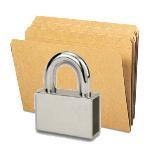
Keep Your Files Safe in Windows
By Windows Talk
In the Age of Internet, it is vital to know how to keep your files safe and secure. The Ability to restrict access to files and folders has become vital for many individuals and institutions. For beginners, encryption works by rewriting information using an algorithm or algorithms and thus making it unreadable to systems and programs which do not hold details about the original encryption, called the key. Encryption is the most advanced and potent way of regulating access to a file that Windows OS offers.
Unless the key is produced and transported to another system, an encrypted file or folder could only be ‘read in its original form’ on the computer or laptop that executed the encryption. The encrypted files and folders stay encrypted and under protection even if the hard drive is removed from the computer and placed in another system. In other words, encryption keeps your files and folders safe and inaccessible even if your data is lost. Decryption is the opposite of encryption and makes files and folders accessible and readable by reverse running the original algorithm(s). Encrypting and decrypting files and folders in Windows are pretty straightforward tasks. Note: EFS (Encrypting File System) is not fully supported on Windows 7 Starter, Windows 7 Home Basic, and Windows 7 Home Premium
This excerpt is shared with permission from Windows Talk.




